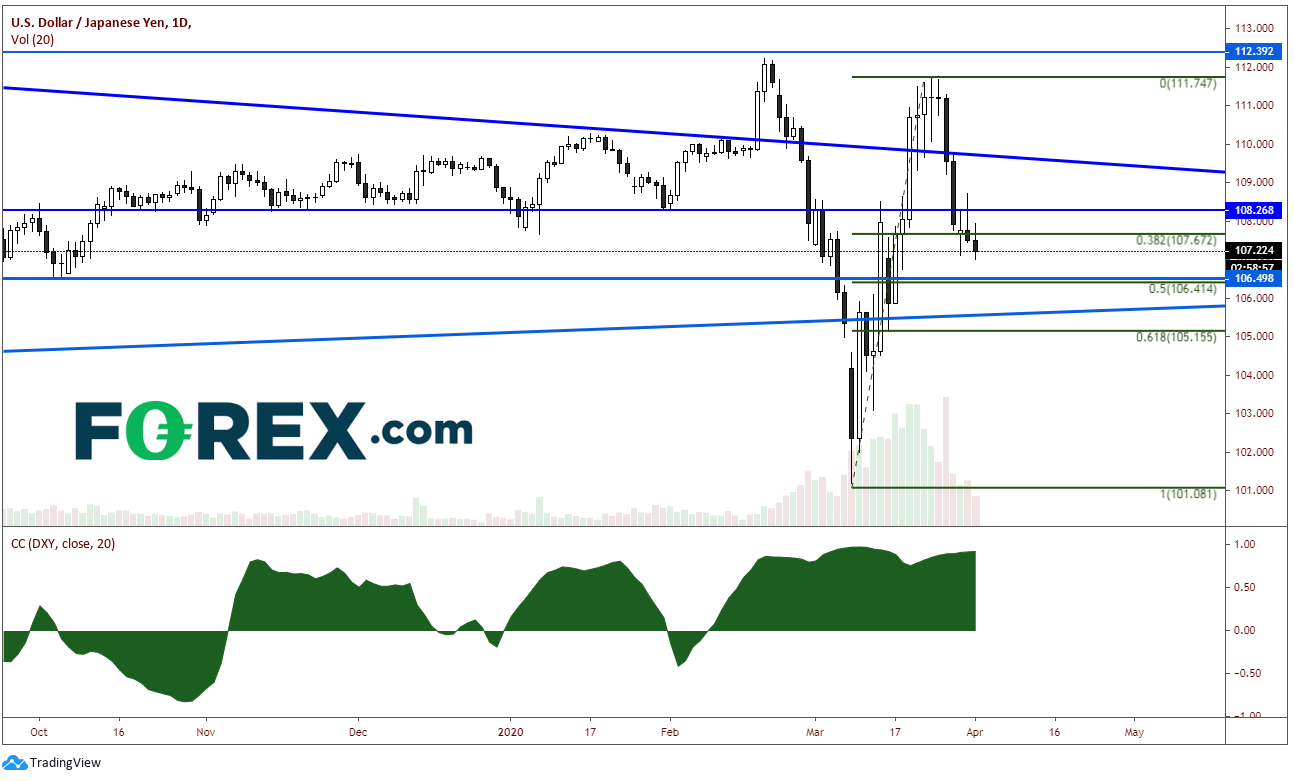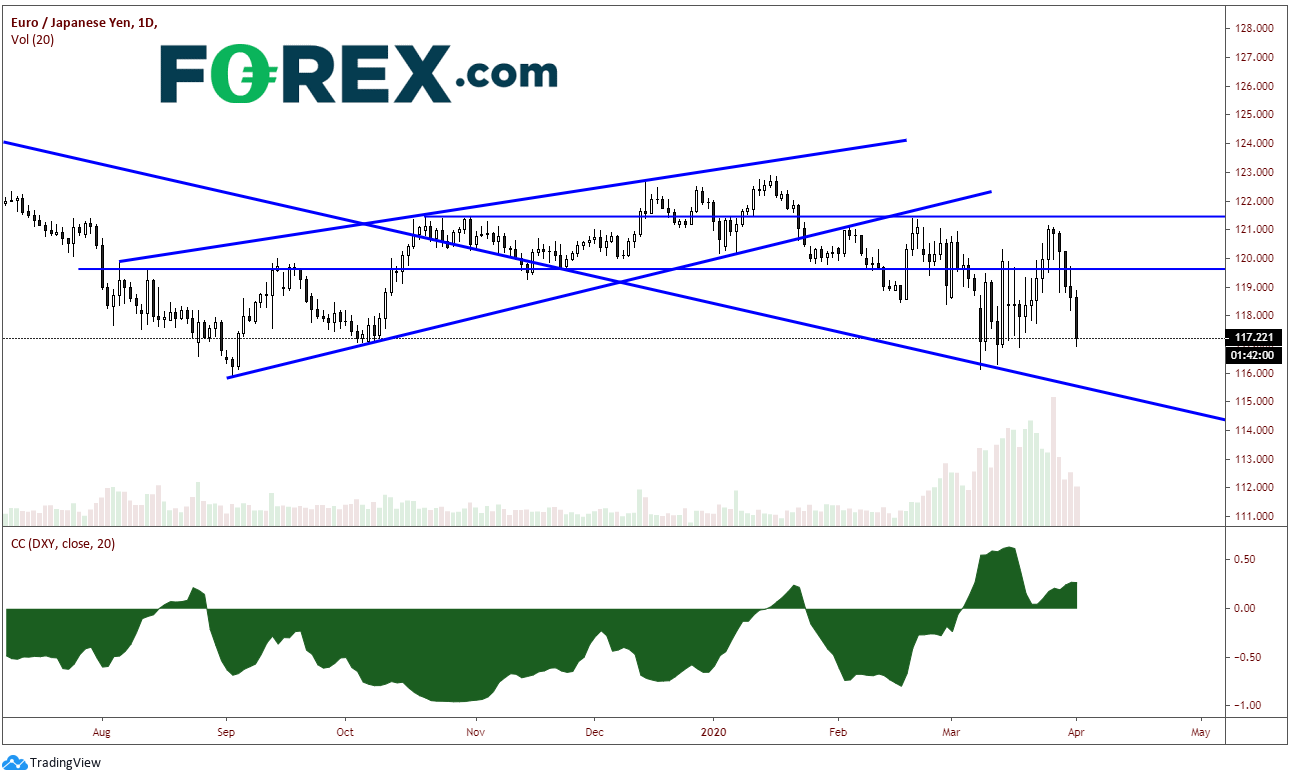Since Feb. 20, when the S&P 500 began selling off from its all-time highs, EUR/JPY has been trading in a volatile trading range between 116.12 and 121.40. However, over the last four trading days, the pair has traded lower from 121.08 to today’s lows near 116.96, down almost 1.5% today alone. Support doesn’t come in until 85/100 pips lower near 116.00, which is near the long-term downward sloping tending and the March 9 lows.

The other reason EUR/JPY is moving lower is because of EUR/USD side of the equation. The pair has been moving lower since Monday’s open. The EUR/USD traded up to the 61.8% Fibonacci retracement level from the highs on March 9 to the lows on March 23 before turning lower. Support is at today’s lows near 1.0900. Notice how highly negatively correlated the EUR/USD is with the DXY. The current reading is -0.99. A correlation coefficient of -1.00 means the two assets are perfectly negatively correlated. This is sure pretty close!

With the EUR lower versus the USD, and JPY higher versus the USD (USD/JPY lower), it makes sense that the EUR/JPY would be much lower, especially with the high correlations that EUR/USD and USD/JPY have with the U.S. dollar. However, when we take a look at the correlation of the EUR/JPY to the DXY, the correlation coefficient is only +0.27! There is only a mild correlation to the DXY.

Here’s the point:
With initial claims tomorrow and non-farm payrolls on Friday, the U.S. dollar currency pairs may continue to be volatile over the next few days. If you are looking for a currency pair to trade, but don’t want exposure to the U.S. dollar, EUR/JPY is a pair to consider.
Which stock should you buy in your very next trade?
AI computing powers are changing the stock market. Investing.com's ProPicks AI includes 6 winning stock portfolios chosen by our advanced AI. In 2024 alone, ProPicks AI identified 2 stocks that surged over 150%, 4 additional stocks that leaped over 30%, and 3 more that climbed over 25%. Which stock will be the next to soar?
Unlock ProPicks AI